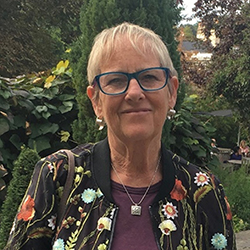ABSTRACT
This study draws on multiple modes of expression in texts that have been generated by my experience of midwifery development since I moved from England to Australia in early 1997.
The Professional Doctorate in Midwifery at the University of Technology, Sydney (UTS) has enabled me to produce and study my work as a midwifery practitioner, researcher, educator, writer and activist and to engage in a process of scholarship that both informs and is generated by practice. This has allowed me to analyse the complex issues that I, and other midwives in Australia, face as we strategise to narrow the gap between our ideals and the realities of the professional and political constraints that challenge midwifery. The study analyses the rhetorical communications I have employed as both carriers of ‘vision’ and ‘means of persuasion’ and the deliberate strategies to make changes that I believe will benefit childbearing women.
My portfolio challenges me and others, to explore how we are able to identify, enact, and convince others of the emancipatory potential of midwifery. Rhetorical innovations are therefore linked to the exposition of woman centred midwifery care; an overall goal being to enable situations in which women can experience the potential power that transforms lives, through their experiences of childbirth. In the process, I aim to produce new knowledge that will equip midwives to understand practice, policy and political situations and see new possibilities for responding and taking action.
I have analysed and explained my work using a framework appropriated from rhetorical theory and drawing on a range of feminist perspectives. This involves identifying and critiquing the rhetorical innovations that I have used when trying to create possibilities and persuade others of the value of midwifery and the need to make changes happen in practice, education and regulation. My study analyses the rhetorical nature of my own work as presented in my portfolio in a range of carefully selected texts that I have authored during my candidature. These include journal and newsletter articles, conference papers, research activities, policy submissions, education and training materials, the development of midwifery standards, formal and informal communications, and other documents, all aimed in one way or another at the rhetorical strategy of stimulating interest and action. The portfolio texts that arise from this work form the empirical data that is studied.
However, in varying ways these texts elicit understandings about the rhetoric and reality of Australian midwifery and the deliberate strategies that are employed by midwives to make changes that will benefit childbearing women. They therefore stand in their own right as contributions to the thesis with their own discursive and epistemological intent.
The reflexive process employed in this thesis highlights comparisons between what is being positioned as the potential of midwifery with what is also presented as the reality played out in contemporary Australian maternity service provision and in midwifery education and regulation.
The thesis weaves its way around the portfolio documents, attempting to bring to life and discuss the culture in which rhetorical innovations and intentional strategies are aimed at narrowing the gap between ‘rhetoric and reality’.

